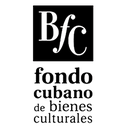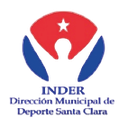Executive Secretary

IV International Symposium on Physical Activity, Sport and Recreation 2025
DEPORTE 2025
Introductory and High Performance Sports Workshop
Unlike other combat sports, fencing is characterized by the use of a bladed sporting weapon; adaptations to the rules allow people with physical and motor disabilities to practice fencing in wheelchairs. The research aims to solve the problem: how do some anthropometric indicators behave in athletes from the Villa Clara social wheelchair fencing team?, the objectives were: to diagnose the behavior of some anthropometric indicators in the Villa Clara social wheelchair fencing team, to determine the anthropometric indicators that influence the technical-tactical actions of the team, to propose guidelines for combat, according to the behavior of the anthropometric indicators measured in the Villa Clara social wheelchair fencing team. Theoretical, empirical, and mathematical-statistical methods are used, including documentary analysis, surveys, interviews, triangulation, measurement, and descriptive statistical techniques. The study involves a population of seven fencers with physical and motor disabilities, members of the selected team. The result is a measurement of 16 anthropometric indicators, primarily of the upper body. These are described and analyzed to establish a profile of each fencer and the team as a whole. The conclusion is presented with the main anthropometric characteristics and their relationship to technical and tactical performance in combat.
A diferencia de otros deportes de combate, la Esgrima, se caracteriza por el uso de un arma blanca deportiva; las adaptaciones a las reglas permiten a personas con discapacidad físico motora, su práctica en silla de ruedas. La investigación se dirige a resolver la problemática: ¿cómo se comportan algunos indicadores antropométricos en atletas del equipo social de esgrima en silla de ruedas de Villa Clara?, como objetivos: diagnosticar el comportamiento de algunos indicadores antropométricos en el equipo social de esgrima en silla de ruedas de Villa Clara, determinar los indicadores antropométricos que influyen en el accionar técnico-táctico del equipo, proponer orientaciones para el combate, según el comportamiento de los indicadores antropométricos medidos en el equipo social de esgrima en silla de ruedas de Villa Clara. Se utilizan métodos del nivel teórico, empírico y estadístico matemático; entre ellos el análisis documental, la encuesta, la entrevista, la triangulación, la medición, y las técnicas estadísticas descriptivas. Se trabaja con una población de siete esgrimistas con discapacidad físico-motora, integrantes del equipo seleccionado. Como resultado se obtiene la medición de 16 indicadores antropométricos fundamentalmente del tren superior, estos se describen y analizan para establecer un perfil de cada esgrimista y del equipo
como tal. Se concluye con las principales características antropométricas y su relación con el accionar técnico-táctico en el combate.
About The Speaker

Arq. Ana Margarita

Discussion

 Gold
Gold
 Gold
Gold
 Silver
Silver
 Silver
Silver